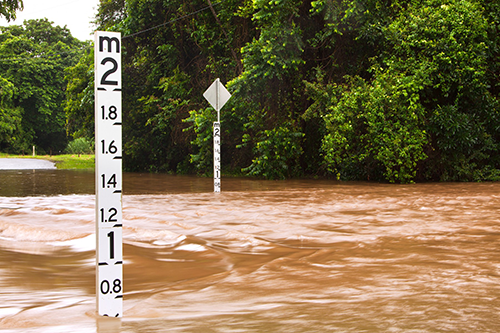24 March 2021
- Help is available for people with flood-related property damage.
- Six finance-related steps to take once immediate danger has passed.
- Be wary of anyone who asks for payment up-front or who asks you to sign a contract immediately.

Severe weather has affected large parts of NSW and Queensland between Sydney and Brisbane. This has resulted in wide-scale property damage caused by heavy storms, damaging winds, landslides and flooding. Areas experiencing very damaging weather include the NSW mid-north Coast, Hawkesbury-Nepean and surrounds.
During a natural disaster, safety should always be your priority
Follow the instructions of local authorities and emergency services. The practical tips below can help if you have had property damage from a natural disaster. You can also visit moneysmart.gov.au for more information.
Emergency assistance for property damage
For emergency help with damaged roofs or fallen trees call NSW or Qld SES at any time on 132 500.
Six steps to take once the danger has passed
- Assess the damage to your property: Take immediate steps to make safe people, pets and your property. Take photos of the damage to the property and your possessions. Prepare a detailed list of the damage. If water has entered the property, do not turn on your electricity until it has been inspected by an electrician. If there is a risk of structural damage, do not enter the building until a qualified person has assessed the building’s structural soundness. If you need help arranging these services, contact your insurer.
- Contact your insurer, broker or financial adviser and follow their reasonable instructions: When lodging your insurance claim, you may experience long waiting times due to the number of people trying to lodge claims. If possible, lodge your claim online. Your insurer may take time to send someone to assess your claim because of difficulty accessing the area and because of the volume of claims. If you can’t remember who you are insured with, check your bank statements (including online) for your premium payments, or call the Insurance Council of Australia’s disaster insurance hotline on 1800 734 621.
- Financial help is available: Contact your insurer or lender if you need financial help. Your insurer may be able to provide emergency accommodation and financial support as part of your claim. If you think you will be unable to meet your financial obligations, contact your lender as soon as possible to discuss assistance that might be available to you.
- Property clean up and repairs: Before you start the clean-up process, take photos or videos of damage to your property and possessions as evidence for your claim. Prioritise removing water or mud-damaged goods from your property that might pose a health risk. You should generally discuss any repairs with your insurer before taking action. Keep receipts if you replace essential items (whitegoods or bedding).
- Watch out for scams: We are aware of unscrupulous operators targeting homeowners, farmers and small businesses in the aftermath of natural disasters. They may claim to help identify damage to your property with a free inspection. Be wary of anyone who asks for payment up-front or who asks you to sign a contract immediately. Do not agree to sign anything that prevents you from dealing directly with your insurer, broker, financial adviser or lawyer. If in doubt, contact your insurer.
- Finalise your insurance claim: Insurers may offer to provide a cash settlement, or alternatively may offer to manage the repairs. If you’re given a choice, take time to consider which option is more appropriate for you. Insurers generally have access to repairers that consumers may find difficult to source and manage by themselves.